Overclocking Computers with AMD Athlon (Thunderbird)
|
| < Day Day Up > |
|
Contemporary processors, including AMD Athlon, usually have fixed a multiplier that relates internal and external frequencies. Because of this, overclocking of Athlon typically is achieved by increasing external frequency.
Athlon has significant technological reserve that provides the possibility of using overclocking modes. Overclocking generally is accomplished by increasing FSB (EV6 bus) frequency. The limit of this frequency — and, consequently, the limit of performance growth for the entire computer system — depends on the motherboard used in the hardware configuration.
Athlon requires a specialized motherboard with chipsets that support the processor. Such a motherboard ensures stable operation of operation of Athlon if 235 W or higher power supply units are used.
The results of performance investigations conducted for overclocked computers based on Athlon processors are provided in the following sections.
Computer with Athlon 700
System Configuration
-
Processor — AMD Athlon 700 (128 KB L1 cache, 256 KB L2 cache, on-die, CPU core frequency operation, standard FSB EV6 frequency of 100 MHz and a data-transfer rate of 200 MHz, 1.7 V core supply, Socket A with 462 pins)
-
Motherboard — Abit KT7 (VIA Apollo KT133, VT8363+VT82C686A chipset)
-
RAM — 128 MB, SDRAM, PC100
-
Hard disk — IBM DPTA-372050 (20 GB, 2 MB cache memory, Ultra DMA/66)
-
Video adapter — Asus AGP-V3800 TV (TNT2 video chipset, 32 MB video memory)
-
Power supply unit — 250 W
-
Operating system — Windows 98 Second Edition
Testing was performed using the WinBench 99 package (CPUmark 99 and FPU WinMark).
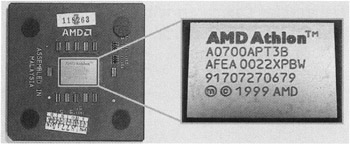
Figure 18.54: Athlon (Thunderbird) processor
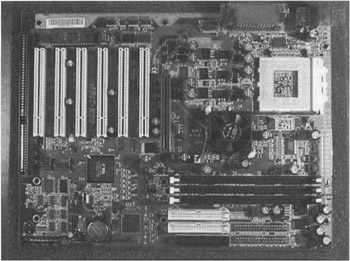
Figure 18.55: Abit KT7 motherboard
Main Parameters of the Abit KT7 Motherboard
-
Supported processors — AMD Athlon (Thunderbird) and AMD Duron (Socket A processor slot with 462 contacts, nominal FSB frequency of 100 MHz)
-
Overclocking — 100/101/103/105/107/110/112/115/117/120/122/124/127/133/136/140/145/150/155 MHz via BIOS Setup
-
Core voltage — 1.1 V-1.85 V, with an increment of 0.25 V
-
Sets the multiplier — BIOS Setup
-
Chipset — VIA Apollo KT133 (VT8363+VT82C686A)
-
RAM — Up to 1.5 GB in three DIMM modules (168 pins, 3.3 V), PC100/133 SDRAM, 100/133 MHz frequency
-
BIOS — Award Plug-and-Play BIOS
Cooling Devices
The Titan TTC-D2T cooler (Fig. 18.56) was used in the test configuration. This cooler ensures efficient cooling of Thunderbird-based Athlon and Duron. Control over the fan is ensured by the built-in hardware-monitoring tools of the VT82C686A chip.
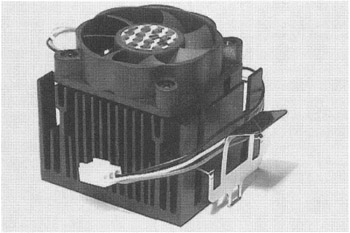
Figure 18.56: Titan TTC-D2T cooler
The processor temperature was controlled using the hard thermal sensor on the motherboard (Fig. 18.57) and hardware-monitoring tools.
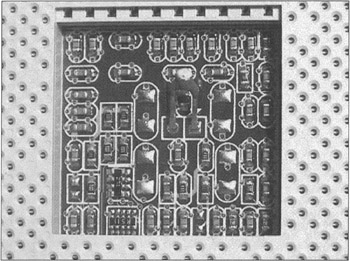
Figure 18.57: Hard thermal sensor on the Abit KT7 motherboard
Overclocking by Increasing the FSB Frequency
The processor-bus frequency is selected in BIOS Setup. The processor-bus frequency was increased up to 115 MHz. The results of overclocking the processor by increasing the processor-bus frequency are summarized in Table 18.26 and in Figs. 18.58 and 18.59.
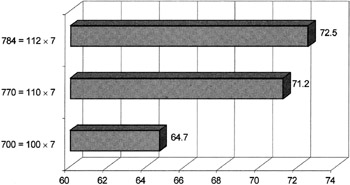
Figure 18.58: Athlon 700 results after increasing the bus frequency (CPUmark 99)
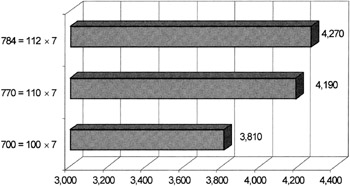
Figure 18.59: Athlon 700 results after increasing the bus frequency (FPU WinMark)
| Processor frequency = bus frequency × multiplier | CPUmark 99 rating | FPU WinMark rating |
|---|---|---|
| 700 MHz = 100 × 7 | 64.7 | 3,810 |
| 770 MHz = 110 × 7 | 71.2 | 4,190 |
| 784 MHz = 112 × 7 | 72.5 | 4,270 |
Overclocking by Changing the Multiplier
Thunderbird-based Athlon has a fixed multiplier. The Abit KT7 motherboard used in this test belongs to a group of motherboards that provide the possibility of changing the multiplier. Although AMD has limited this capability by cutting the L1 bridges on the surface of the processor case, the processor used in this experiment had closed L1 bridges.
Thus, this specific processor did not require restoration of the L1 bridges (Fig. 18.60).
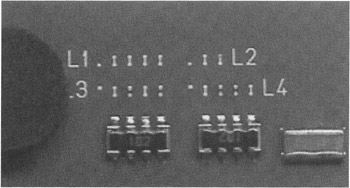
Figure 18.60: Bridges on the Athlon processor
The overclocking parameters were chosen and set in BIOS Setup using SoftMenu. The overclocking results, as well as the chosen modes, are presented in Table 18.27 and in Figs. 18.61 and 18.62.

Figure 18.61: Athlon 700 results after changing the multiplier (CPUmark 99)
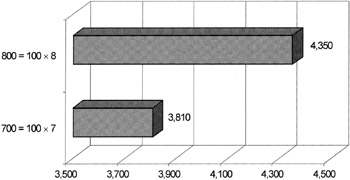
Figure 18.62: Athlon 700 results after changing the multiplier (FPU WinMark)
| Processor frequency = bus frequency × multiplier | CPUmark 99 rating | FPU WinMark rating |
|---|---|---|
| 700 MHz = 100 × 7 | 64.7 | 3,810 |
| 800 MHz = 100 × 8 | 71.8 | 4,350 |
Overclocking via the Bus and Multiplier
Maximum performance levels are achieved by choosing the optimal processor frequency at the best multiplier value.
The results of overclocking Athlon using this approach are in Tables 18.28–18.30 and in Figs. 18.63 and 18.64. Although Athlon could be overclocked only to 825 MHz, a significant improvement in system performance was achieved.
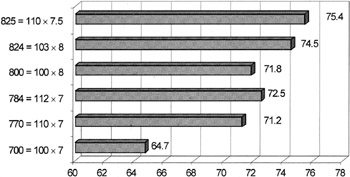
Figure 18.63: Athlon 700 results after combined overclocking (CPUmark 99)
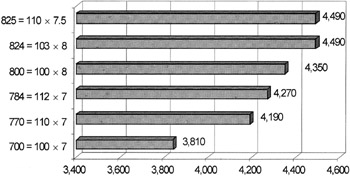
Figure 18.64: Athlon 700 results after combined overclocking (FPU WinMark)
| Processor frequency = bus frequency × multiplier | CPUmark 99 rating | FPU WinMark rating |
|---|---|---|
| 700 MHz = 100 × 7.0 | 64.7 | 3,810 |
| 770 MHz = 110 × 7.0 | 71.2 | 4,190 |
| 784 MHz = 112 × 7.0 | 72.5 | 4,270 |
| 800 MHz = 100 × 8.0 | 71.8 | 4,350 |
| 824 MHz = 103 × 8.0 | 74.5 | 4,490 |
| 825 MHz = 110 × 7.5 | 75.4 | 4,490 |
| Processor frequency = bus frequency × multiplier | Voltage (V) | Temperature (°C) |
|---|---|---|
| 700 MHz = 100 × 7.0 | 1.70 | 44 |
| 800 MHz =100 × 8.0 | 1.75 | 45 |
| 824 MHz =103 × 8.0 | 1.80 | 49 |
| 825 MHz =110 × 7.5 | 1.80 | 49 |
| Parameters | Voltage (V) | POST routine | Windows | WinBench test |
|---|---|---|---|---|
| 800 MHz = 100 × 8.0 | 1.700 | Passed | Didn't boot | - |
| 800 MHz =100 × 8.0 | 1.725 | Passed | Booted | Failed |
| 800 MHz = 100 × 8.0 | 1.750 | Passed | Booted | Failed |
| 840 MHz =105 × 8.0 | 1.800 | Failed | - | - |
| 840 MHz =112 × 7.5 | 1.800 | Failed | - | - |
|
| < Day Day Up > |
|
EAN: 2147483647
Pages: 111